One of the most fun parts of illustrating picture books is the early stage; the one where a publisher has contacted me because they think I’d be the right fit for a text they’ve just acquired.
Reading a new, unpublished text, is a thrill. There’s something so energising about the potential that lives within a new text. Yes, of course, there are the words on the page which tell a story, but that’s just one half of the puzzle. No matter how prescriptive a text, there’s still another half of a story to tell: the picture part.
I’ve recently been reading “Understanding Comics“, by Scott McCloud. I can’t speak highly enough of the guidance and analysis of ‘sequential art’ in this book. I already consider it one of the most influential books I’ve ever read for my own practice. And even though Scott is talking about how sequential art pertains to comics, I couldn’t help but think of picture books as another form of sequential art. The same rules apply. It’s all about how you combine words and pictures in a sequence.
In the book, Scott gives seven distinct categories for word/picture combinations.
When I’m working alone in my studio, I often find I get stuck on an idea or a spread. Or, I simply love a drawing I’ve got but deep-down, I know that it’s not working. These known categories are a great tool to free up my thinking. I can either use them on a live text or, for practice, on any piece of text, original or otherwise.
Let’s take some text, “The cow jumped over the moon.” Here are seven ways one could illustrate that text using Scott’s framework.
Word-specific
Words provide all you need to know, while the pictures illustrate aspects of the scene being described.

Picture-specific
Pictures provide all you need to know, while the words accentuate aspects of the scene being shown.

Duo-specific
Words and pictures both send roughly the same message.
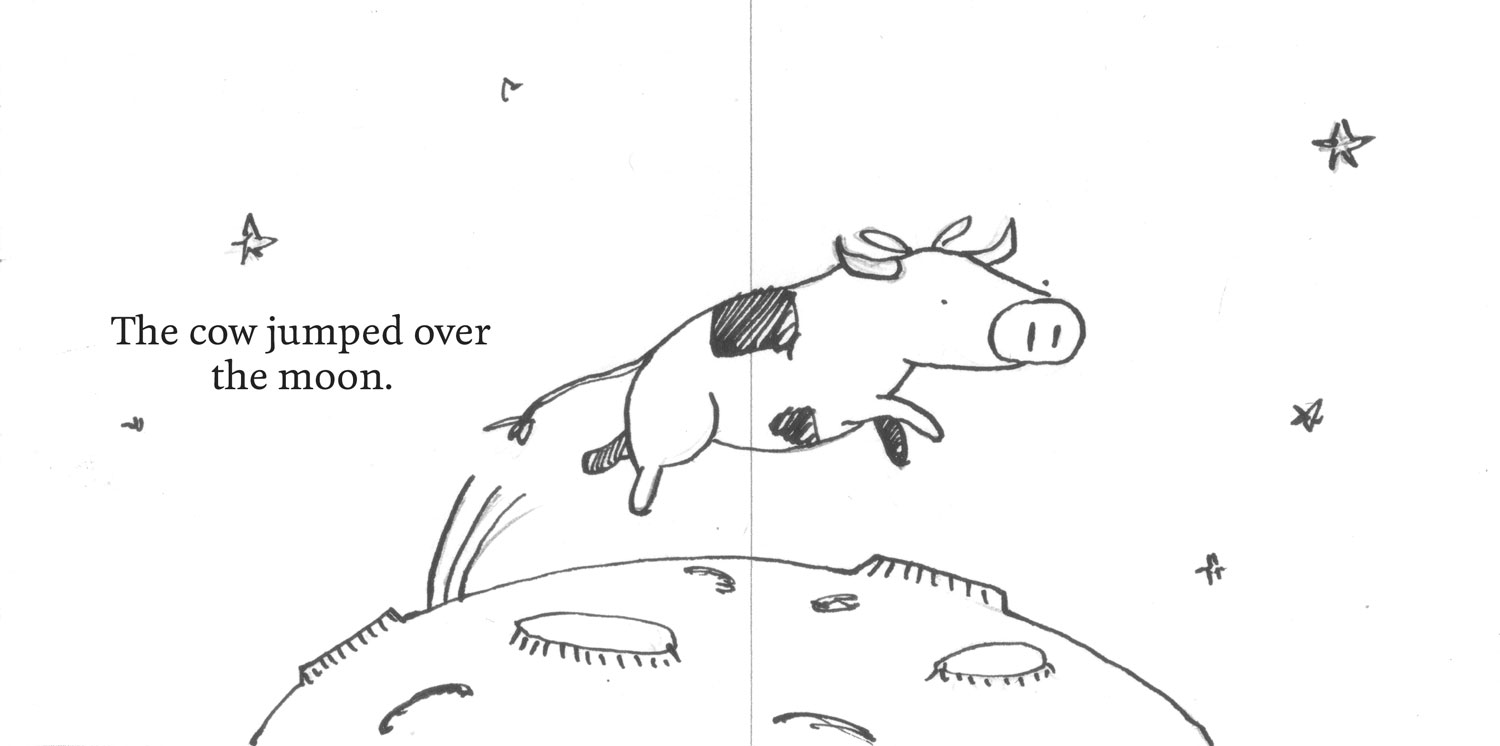
Intersecting
Words and pictures working together in some respects while also contributing information independently.
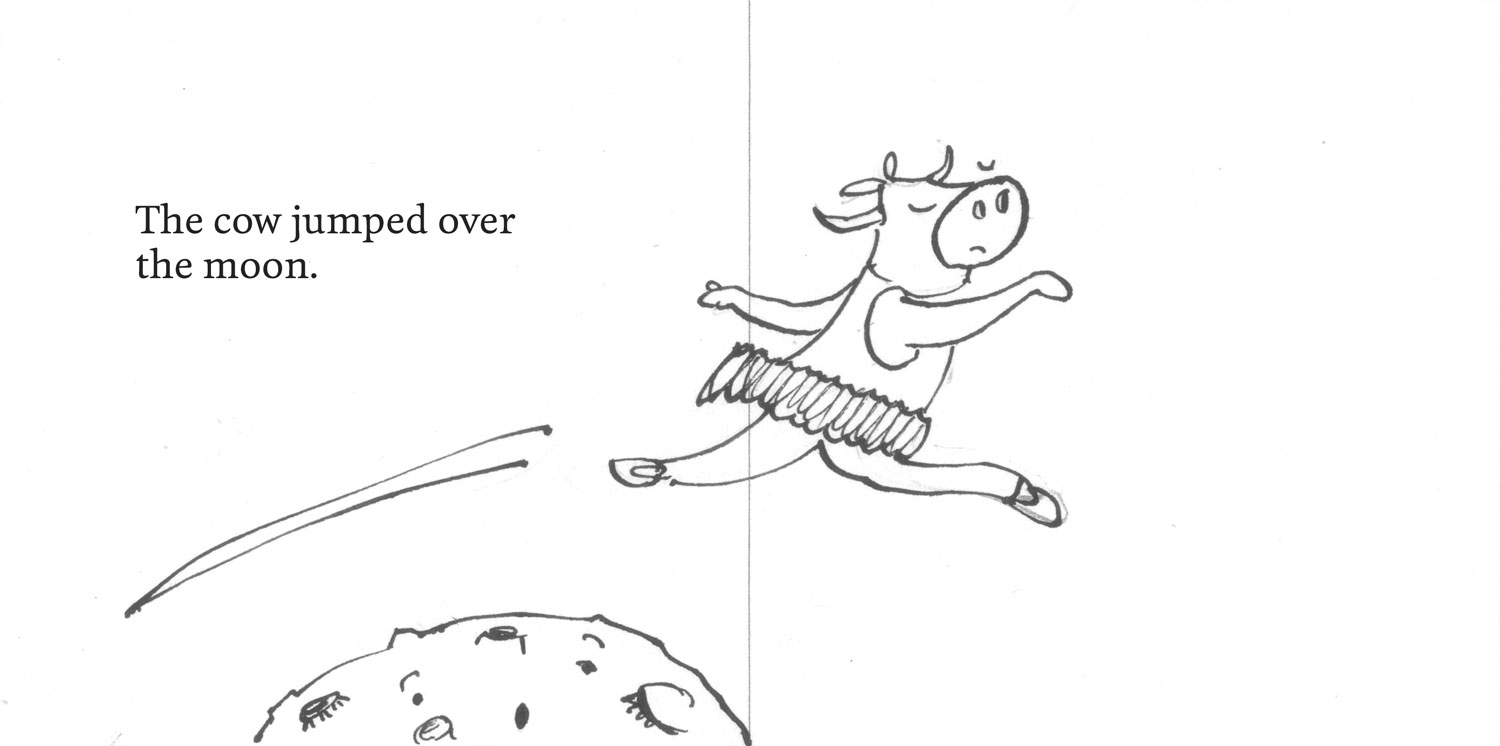
Interdependant
Words and pictures combining to convey an idea that neither would convey alone.
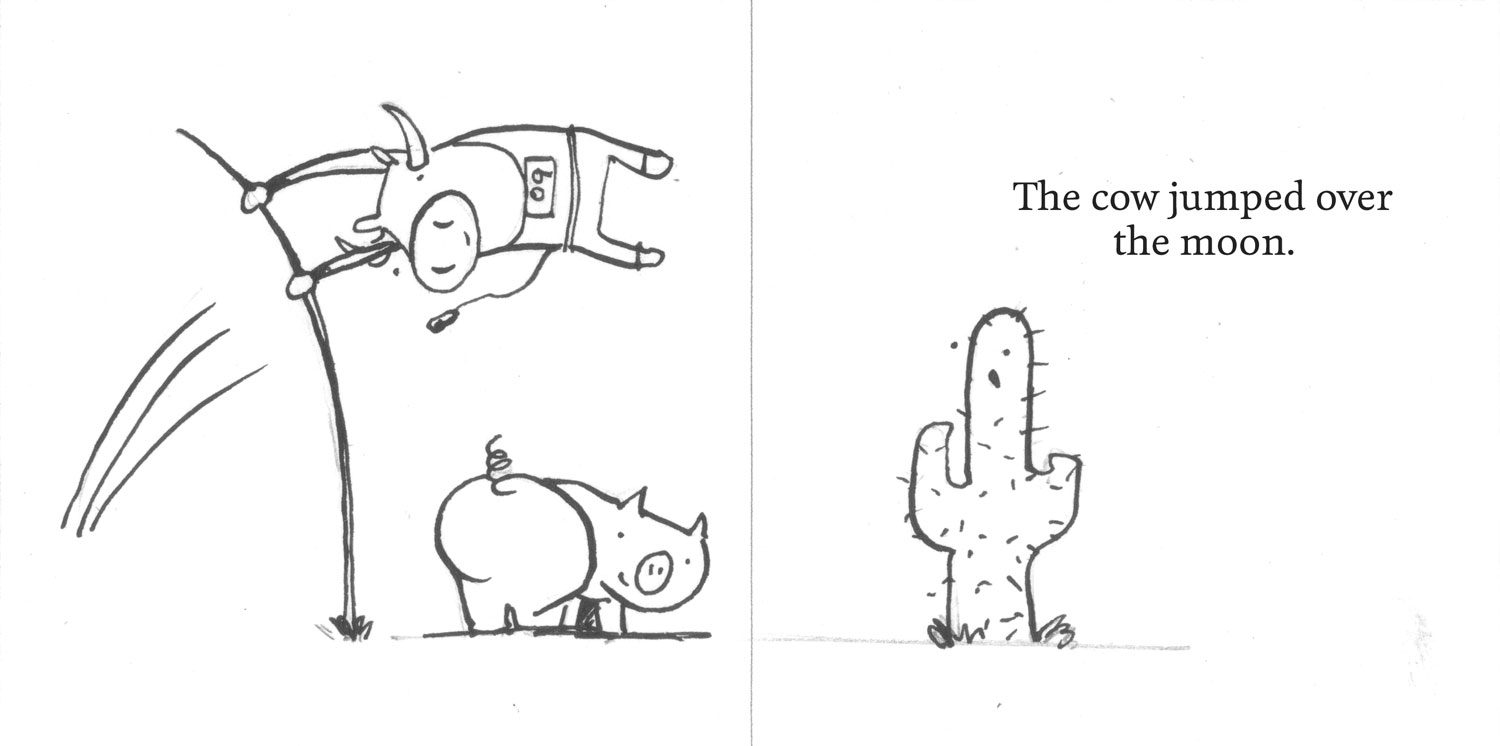
Parrallel
Words and pictures following seemingly different paths without intersecting.
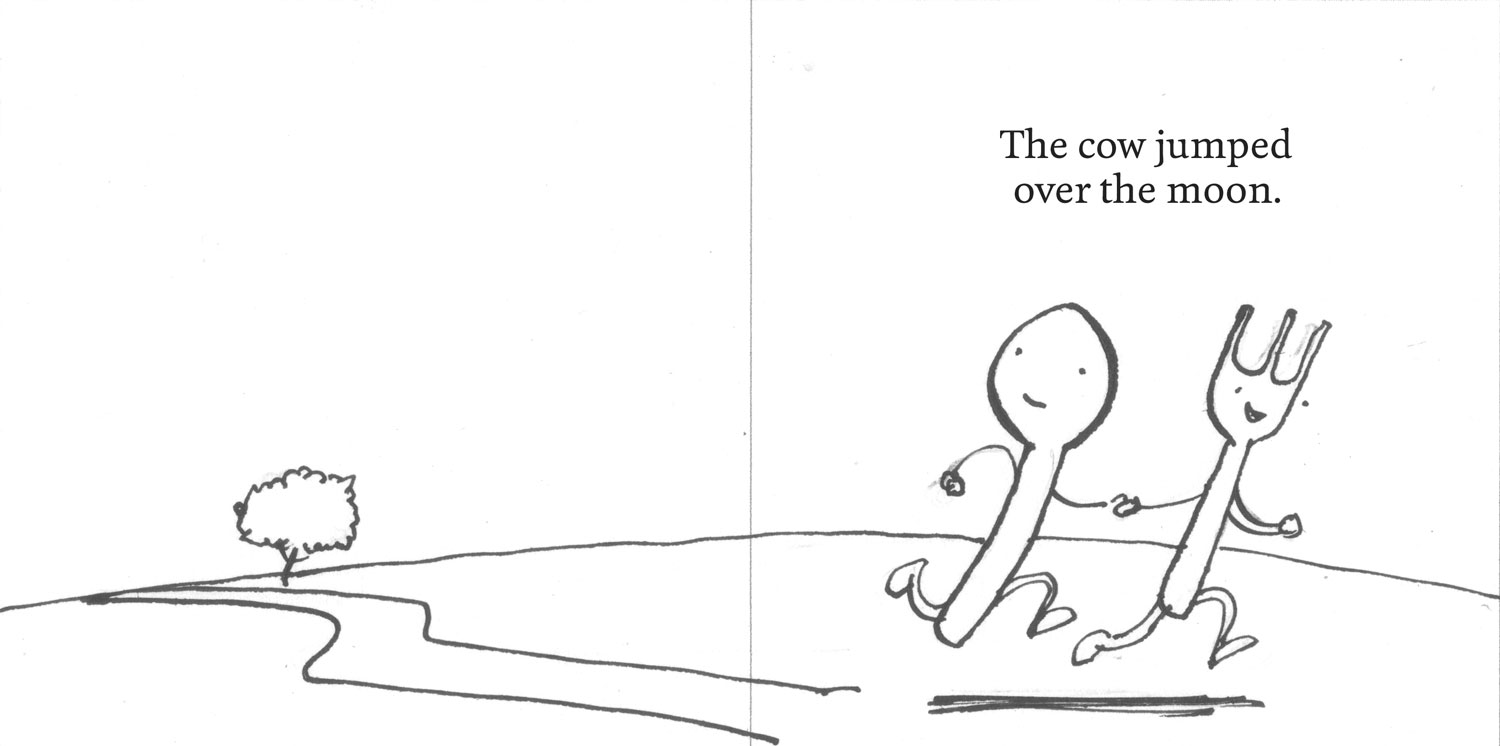
Montage
Words and pictures combined pictorially.
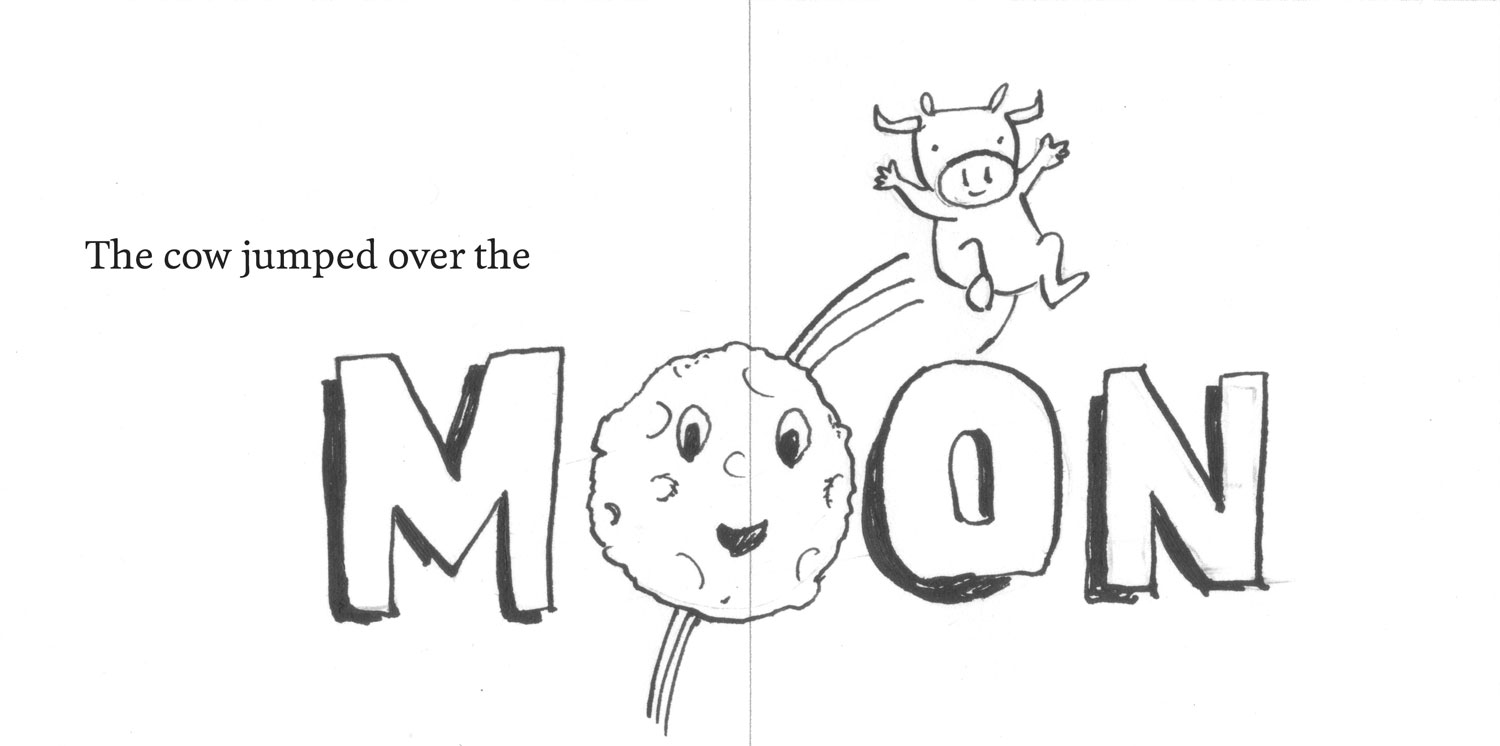
How to use these combinations
With this simple but beautifully articulated framework for word-picture combinations, it’s easier than ever to force myself to think outside my own biased frame of reference to produce the best story possible.
